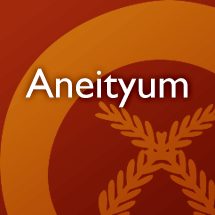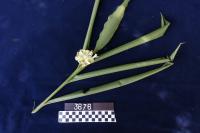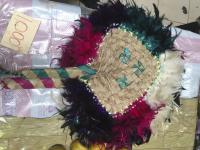An example search has returned 100 entries
apnyin
n. time; weather; day; morning
bookmarkauhorohos
v. to weed; to clear land
bookmarkcustard apple
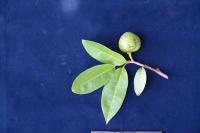
n. tree, 5 m tall (collection: Gregory M. Plunkett #3520)
Example: Children sometimes eat this fruit but it smells bad. Adults do not eat it. An introduced species so there is no local name.
bookmarkereuc
v. to shake a branch; to make fruit fall. pl: "ereucereuc"
bookmarketgei
v. to weed
bookmarketjo itac
v.n. to fall behind; to come late
bookmarkgirigiri
n. coconut basket
bookmarkinceipou
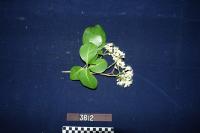
inhalav imtinjap
n. wind-related term; no definition provided. Possibly referring to "inhalav" ’child’.
bookmarkinhenid
n. kind of sugarcane
bookmarkinjedete anawanarin

inlepei u inpoded atamaiñ
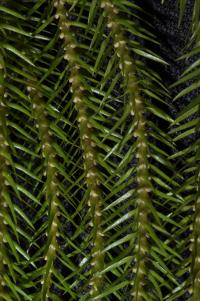
inmayinepad
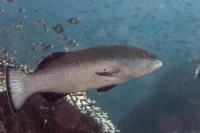
n. Squaretail coralgrouper
Example: Photo by Mark Rosenstein / iNaturalist.org, License: CC BY-SA 3.0 via Fishes of Australia
bookmarkinm̃ap̃
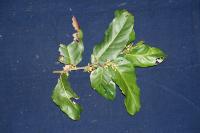
n. tree, 12-14 m tall (collection: Gregory M. Plunkett #3611)
Example: 1. The nut of this tree is edible and very good. Boil it with skin on or bake it in the earth oven and then cut it in half and eat. 2. Leaves for top of house ridge. 3. Leaves for fertilizing the water taro in swamps.
bookmarkinp̃alanhas
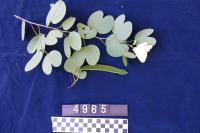
intaetled
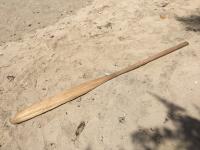
intate a nelgo waj
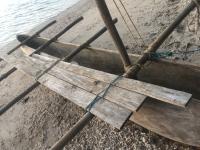
intop̃ hau
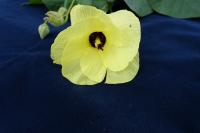
n. well branched tree, 6 m tall (collection: Gregory M. Plunkett #3202)
Example: 1. Young shoots are peeled and made into grass skirts. Scrape the stem and take the green part off, tie strips together and put under stones in the sea for retting, let sit 5 days in sea, but check these on a daily basis. When the fiber becomes soft, that is the time to take it from under the stones, clean off the excess materials, and hang it in the sun to dry for 3 days--this will bleach it and give it a whitish color, at which point it can be woven into a skirt. 2. The fiber can be used to make a small rope that is tied with shells and used for custom dances. 3. When the stems of this tree are older, the wood is very hard and it can be used to make the main frame that is arched for a cyclone house. According to Reuben these houses are not made much anymore on Aneityum Island. 4. To cook the intestines of fish that are eaten, take several leaves and put them in a small pile, making a wrapping, then use a local fiber to tie this together and cook on charcoal for as long as needed to prepare the fish parts. 5. In this area, sometimes knowledge of the plants and flowering are used as a calendar to indicate the time for planting of specific crops. Reuben will provide more details on a future trip. 6a. This species is an important "message plant." If a person is not home and you are visiting from the East--e.g. an Eastern part of the Island--that person can leave a 12 inch piece of stick in front of the door of the house so that the inhabitant knows that an eastern visitor (from Anawonjei district) has come by your home. The reason that person has come to visit is to pass an important message to you--good or bad "luck". The bad luck message might be a death, and is not told directly to the person. The good luck message might be a birth, or conflict that has been resolved. These messages are communicated using sticks--each district has a different species of plant. Reuben’s is the hibiscus. 6b. Message plant for Eastern people. If someone dies, use this plant, clip it in front of hem, in front of home, they ask “who” and you can tell them. In Eastern culture you cannot tell them directly. 7. When a person is too drunk with kava, take a branch of this and brush him with it to help make the effects go away. 8. Traditional plates for food.
bookmarkinwouasan
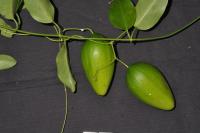
n. liana climbing on Syzygium, growing along ridge in dense rainforest. Latex white (collection: Gregory M. Plunkett #4079)
bookmarkinyehec
n. mandrake
bookmarkjigkom
[ʧiŋkum] n. chewing gum
bookmarkkaraka
n. kind of tree
bookmarkkatupinmi
n. kind of taro
bookmarkkiliek nahpu
n. kind of taro
bookmarklelahapol
n. a cultivated field
bookmarklopot lopot
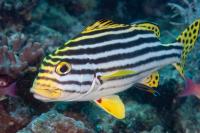
n. Oriental sweetlips
Example: Photo by Mark Rosenstein / iNaturalist.org, License: CC BY-SA 3.0 via Fishes of Australia
bookmarkmaprum
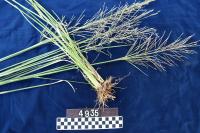
na elmai
n. cloth (related to nelmai)
bookmarknaceijo
n. half tide when rising
bookmarknagai has
n. kind of sugarcane
bookmarknaha
n. Crinum asiaticum L.
Example: subterranean part used as mouthwash for toothache (Crinum asiaticum)
bookmarknahca
n. a burden of pandanus leaf
bookmarknaheñ
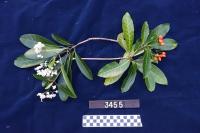
nalgaj
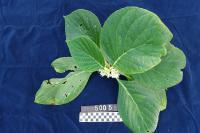
namniañia
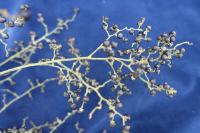
napayu
n. kind of tree
bookmarknapile
n. kind of taro
bookmarknariko cei
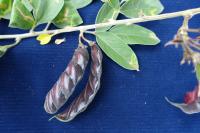
n. fence-forming shrub, 1. 5 m tall (collection: Gregory M. Plunkett #3206)
Example: 1a. Cultivated in gardens. Cook seeds of this species or eat them raw before they are fully ripened. The green pods can also be cooked in a fire and eaten. 1b. Cultivated plant for its edible seeds, can be prepared in a pot of bamboo. OR could take branches w/ seeds and put directly on the earth oven for cooking. 2. Planting this species adds nitrogen to the soil--grow it on soil that is said to be "tired."
bookmarknasanhac
n. the poison of the inhac
bookmarknathut u nadiat
n. dawn of day
bookmarknatoga ahrei
n. wind-related term; no definition provided
bookmarknauram
n. kind of banana
bookmarknauram aged
n. kind of banana
bookmarknausecrai
n. a species of thorn
bookmarknawod
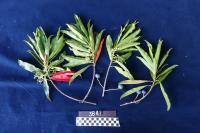
n. tree, 12 m tall (collection: Gregory M. Plunkett #3641)
Example: 1. The wood of this tree is used to make temporary houses, for example, when making a garden by the river. 2. The wood can be sawn into timber. 3. People collect red leaf and put under tongue when want to talk about conflicted issues such as a dispute to make their argument stronger.
bookmarkneaig ahi
n. a white coconut
bookmarkneaig cap
n. a red coconut
bookmarknedec
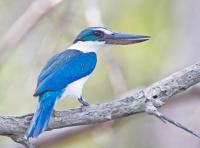
[neθeɣ] n. Collared Kingfisher
Example: Photo by JJ Harrison, License: CC BY-SA 3.0 via Wikimedia Commons
bookmarknegejwaj

nehivaing
nekro
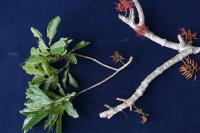
nekrou
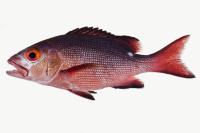
n. Two-spot red snapper, twinspot snapper, red bass
Example: Photo by Jeffrey T. Williams / Smithsonian Institution, License: CC BY-SA 3.0 via Fishes of Australia
bookmarknepiloan
n. tender shoots
bookmarknepnou
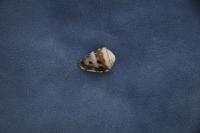
nesgin
n. the pith
bookmarkniditau
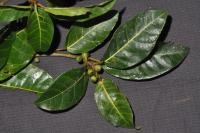
nighincai
n. the stump of a tree
bookmarknijmanyahao
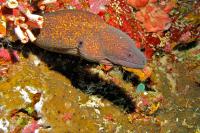
n. Yellow-Edged Moray
Example: Photo by Bernard Dupont, License: CC BY-SA 3.0 via Fishes of Australia
bookmarknillum
n. moss
bookmarknilpodou
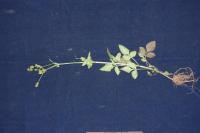
n. herb, growing at edge of garden area. Flowers yellow. (collection: Gregory M. Plunkett #3599)
Example: This is for a medicinal tea to give energy to a person who is not feeling well. Collect a handful of young stem apices and boil in 2-3 cups of water. Drink warm to help the body be strong and healthy. It is also good to treat diarrhea. When a person feels well again, stop this treatment but they can also drink this 1x daily, once before breakfast or before lunch, as a healthful tea.
bookmarknirid u numu
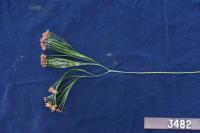
n. terrestrial fern on forest floor, growing in disturbed forest. (collection: Gregory M. Plunkett #3482)
Example: People who go fishing take this plant along with other unspecified leaves, crush them and rub them on the fishing line that the person is using. This is said to attract more fish to the bait. It is also a "message plant" to be put in a person’s hat when they come back from fishing and then people know that they caught fish. Local name means "fish gill." For performing a weather magic ritual to produce fog, this plant is fermented along with another plant (nap̃at) in a hole in a sacred stone (called "Naemoso") at a secret location on Aneityum.
bookmarknitai auanipin upene
n. frankincense
bookmarknitet
n. kind of tree
bookmarknitit a nelgo waj
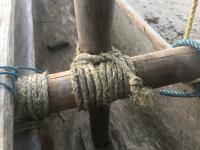
nomrop̃om̃
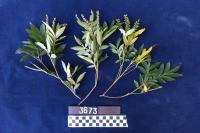
nopou
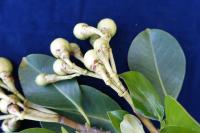
n. tree to 5 m, dbh 10 cm (collection: Michael J. Balick #4881)
Example: The wood of this tree is used to make house-posts, it is strong. The leaves are used as a compost for the taro patch; line the hole with the leaves of this tree, then place soil over that and plant the taro. When the fruits are ripe, local people say that the hermit crabs are "fat" and ready to collect and eat. When a person is in the forest and there is no coconut fruit fiber to start a fire with, use a dry stick, shave it and use a match to start a pile of this tinder to make a good fire. The wood is said to be "oily." This gives it a nice aroma. To perfume coconut oil, drop the dry flowers in it--use 1 handful of dried flowers added to a pot of oil boiling on the fire while making it. Strain out flowers and the oil smells good. Flowers can also be added to the oil once it is bottled to perfume it.
bookmarknuarin eptu
n. meadow
bookmarknuarin marara
n. dale
bookmarknugyaubod
n. kind of tree
bookmarknumnava
n. kind of sugarcane
bookmarkpakauoc
adj. unripe
bookmarkpospos
n. a small red berry used as beads
bookmarkpuke
adv. seaward
bookmarksimi
adv. down here; also "sime"
bookmarktesyapotan
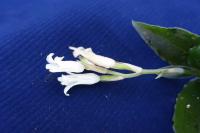
n. terrestrial orchid growing in cloud forest along ridge. Flowers white. (collection: Gregory M. Plunkett #3281)
bookmarkwakas
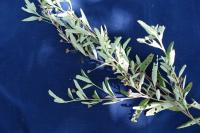
n. herb to 0. 75 m, flowers yellow. (collection: Michael J. Balick #4891)
Example: If a person has the flu, collect the fruits and chew and swallow them. Chew 3 fruits in the morning for 3 days. Take a handful of leaves, still on branches, and boil them in a half liter of water, for 15 minutes. Drink 1 cup daily for 5 days or until the sickness "goes down."
bookmark